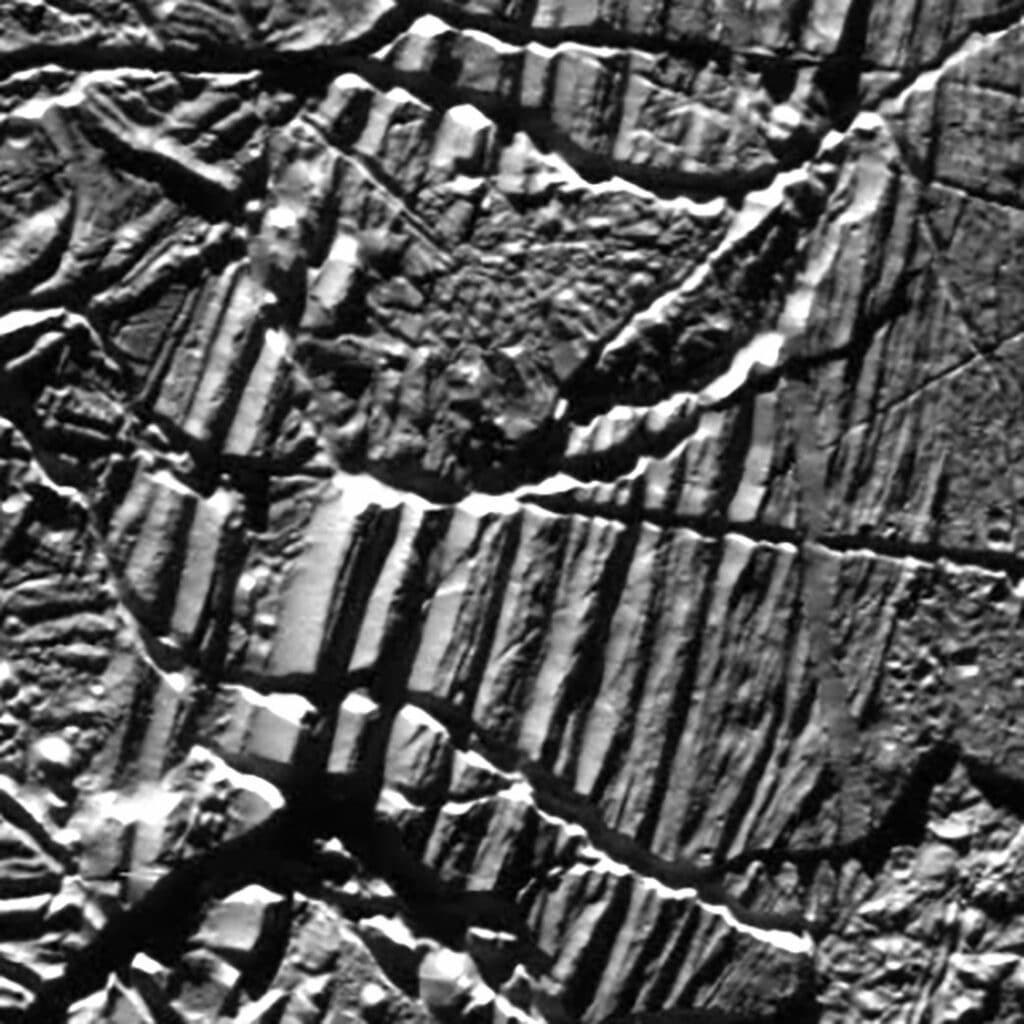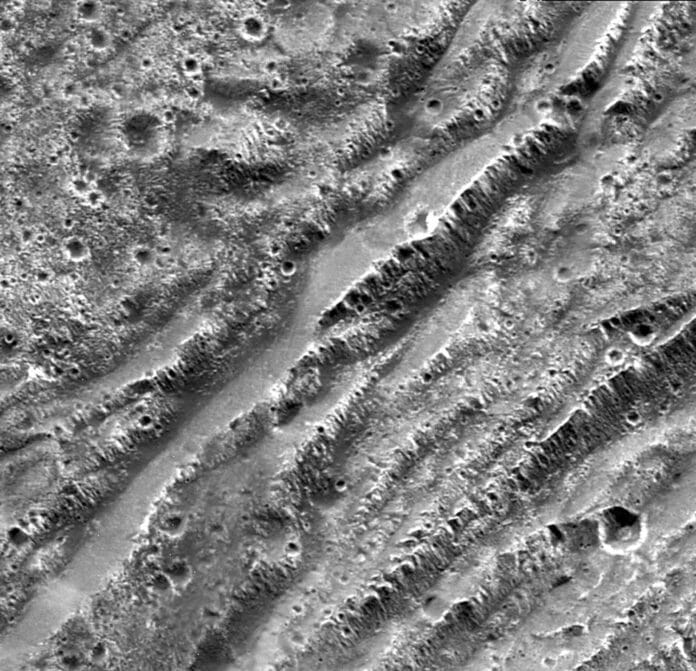It is known that several of the ice-covered moons that orbit the giant planets in the outer reaches of our solar system are geologically active. Because of their massive gravitational pull, Jupiter and Saturn’s gravity stretches and pulls the bodies in their orbit, resulting in moonquakes that can shatter the moons’ surfaces and crusts. For the first time, new research demonstrates how these earthquakes may cause landslides that result in a noticeably smooth landscape.
The research describes how quakes and landslides are related and sheds fresh light on how the frozen moon’s surfaces and textures change.
Ice-covered moons like Europa, Ganymede, and Enceladus frequently have sharp ridges surrounded by comparatively smooth, flat terrain. According to scientific theory, these spots are caused by liquid erupting from frozen volcanoes. But it still needs to be determined how that mechanism operates when the surface temperatures are so low and hostile to fluids.
The finding provides a straightforward explanation that excludes liquid on the surface. The tectonic fault scarps, which are steep slopes created when the surface breaks along a fault line and one side descends, are thought to be the steep ridges that scientists measured. They calculated the strength of previous moonquakes using the measurements and seismic models. They discovered that they could be powerful enough to raise debris that subsequently falls downhill, where it spreads out and smooths the terrain.

Lead author Mackenzie Mills, a graduate student at the University of Arizona in Tucson, who conducted the work during a series of summer internships at NASA’s Jet Propulsion Laboratory in Southern California, said, “We found the surface shaking from moonquakes would be enough to cause surface material to rush downhill in landslides. We’ve estimated the size of moonquakes and how big the landslides could be. This helps us understand how landslides might shape moon surfaces over time.”
NASA’s upcoming Europa Clipper mission, bound for Jupiter’s moon Europa in 2024, will give the research a significant boost, providing imagery and other science data. After reaching Jupiter in 2030, the spacecraft will orbit the gas giant and conduct about 50 flybys of Europa. The mission has a sophisticated payload of nine science instruments to determine if Europa, which scientists believe contains a deep internal ocean beneath an outer ice shell, has conditions suitable for life.
“It was surprising to learn more about how powerful moonquakes could be and that it could be simple for them to move debris downslope,” said co-author Robert Pappalardo, project scientist of Europa Clipper at JPL, which manages the mission.
“Especially surprising were the modeling results for tectonic activity and quakes on Saturn’s moon Enceladus, a body that has less than 3% of the surface area of Europa and about 1/650 that of Earth. “Because of that moon’s small gravity, quakes on tiny Enceladus could be large enough to fling icy debris right off the surface and into space like a wet dog shaking itself off.”
Journal Reference:
- Mackenzie M. Mills, Robert T. Pappalardo, et al. Moonquake-triggered mass wasting processes on icy satellites. Icarus. DOI: 10.1016/j.icarus.2023.115534
